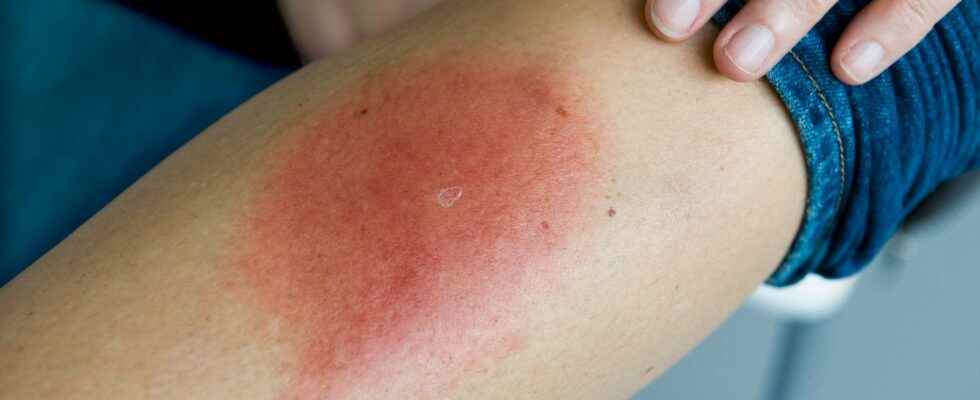The number of tick bites and Lyme disease infections reaches a peak this midsummer weekend. A vaccine is underway, but until then you have to protect yourself in other ways.
The midsummer weekend is the period in Sweden when most people are bitten by ticks.
– Then we are out in the woods and on the ground and pick flowers for the midsummer pole. In about 14 days, we will see an increased number of patients with Lyme disease, says Johan Sanmartin Berglund, professor of health sciences at Blekinge University of Technology.
He also leads the Lyme disease vaccine study that is currently underway in Sweden.
There is currently no vaccine against Lyme disease. Several attempts have been made to develop one, but without much success. An aggravating circumstance is that the Lyme disease bacterium is found in many, different variants. Now, however, there is a vaccine candidate, VLA15, which has shown promising results. Three doses have so far shown a good effect against Lyme disease.
Study in progress
The new vaccine has been developed by Pfizer and the French vaccine company Valneva. The pharmaceutical giant Pfizer recently bought into Valneva and the purchase price will go to the continued development of the Lyme disease vaccine VLA15.
– We are in full swing with the study in Sweden and have recruited 400 people for it. We will start testing the vaccine soon. It will take place in Blekinge, Örebro, Lund, Stockholm and western Götaland, says Johan Sanmartin Berglund.
His study has, among other things, mapped the types of Lyme disease that are found in Sweden and other countries in Europe with a high incidence of the disease. They have also looked at various risk factors for contracting Lyme disease and which bacterial strains the ticks carry. The study must be completed by the end of the year.
– The vaccine seems to work on the bacterial strains the ticks carry. If we get a successful result in this phase 3 study, we can apply for an approval in 2025. The approval itself usually takes around six months.
“Creeps for half an hour”
Until there is an effective vaccine against Lyme disease, Johan Sanmartin Berglund recommends that you get into the habit of examining your body after you have been out in nature. He says that 1 in 200 tick bites leads to Lyme disease.
– The tick usually crawls around on the body for about half an hour before it decides to bite. You usually have time to brush it off, he says.
Once it has bitten, make sure to remove it within 24 hours.
– The risk of contracting Lyme disease drops dramatically if you remove the tick within 24 hours.
The borrelia bacteria are located in the tick’s gastrointestinal tract. So it is not the bite itself that transmits the infection.
– Avoid pouring grease or the like on the tick to make it let go. This only increases the risk of the tick vomiting the bacteria into the blood. And do not touch it with a needle, says Johan Sanmartin Berglund.
You do not need to be afraid if part of the tick remains in the skin.
– Often it is a piece of the jaw that remains. But that is not where the infection is.
Facts
Borrelia
Lyme disease is caused by a group of bacteria that ticks can carry. The bacteria are found in the tick’s gastrointestinal tract.
In Sweden, about 10,000 people are infected with Lyme disease every year.
You can have Lyme disease without knowing it because it does not always cause any symptoms. Borrelia can heal itself.
Between 10 and 20 percent of all ticks carry Lyme disease. Less than 1 percent of all ticks carry TBE.
There is a vaccine against TBE but not against Lyme disease. Lyme disease is sometimes treated with antibiotics.
The vaccine candidate VLA15 has shown effect against six variants of the borrelia bacteria. It is now being tested in Sweden.
An approval may come in 2025.
Sources: The Swedish Public Health Agency, fästing.nu
Read more
